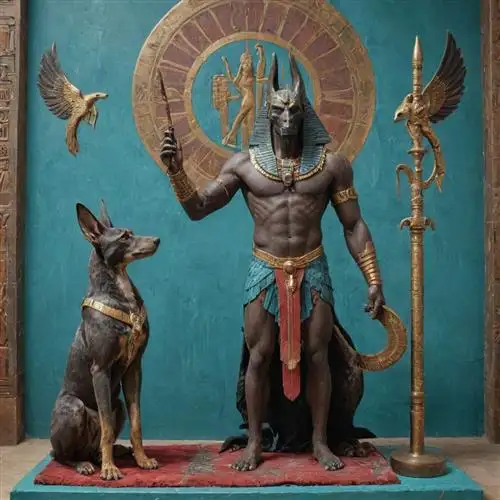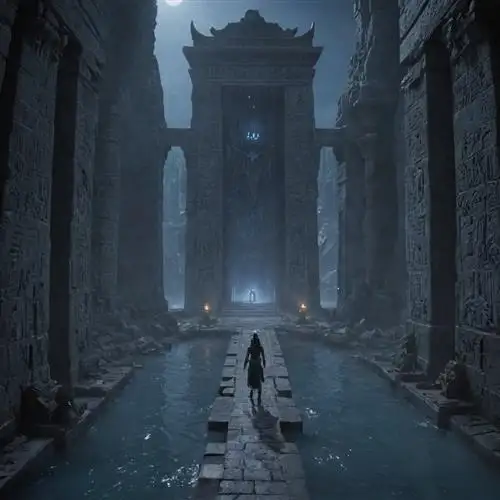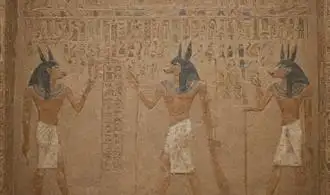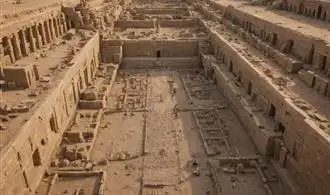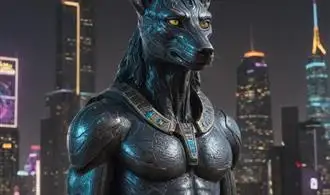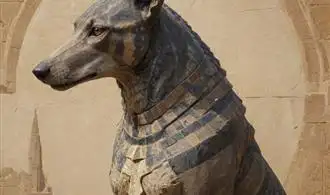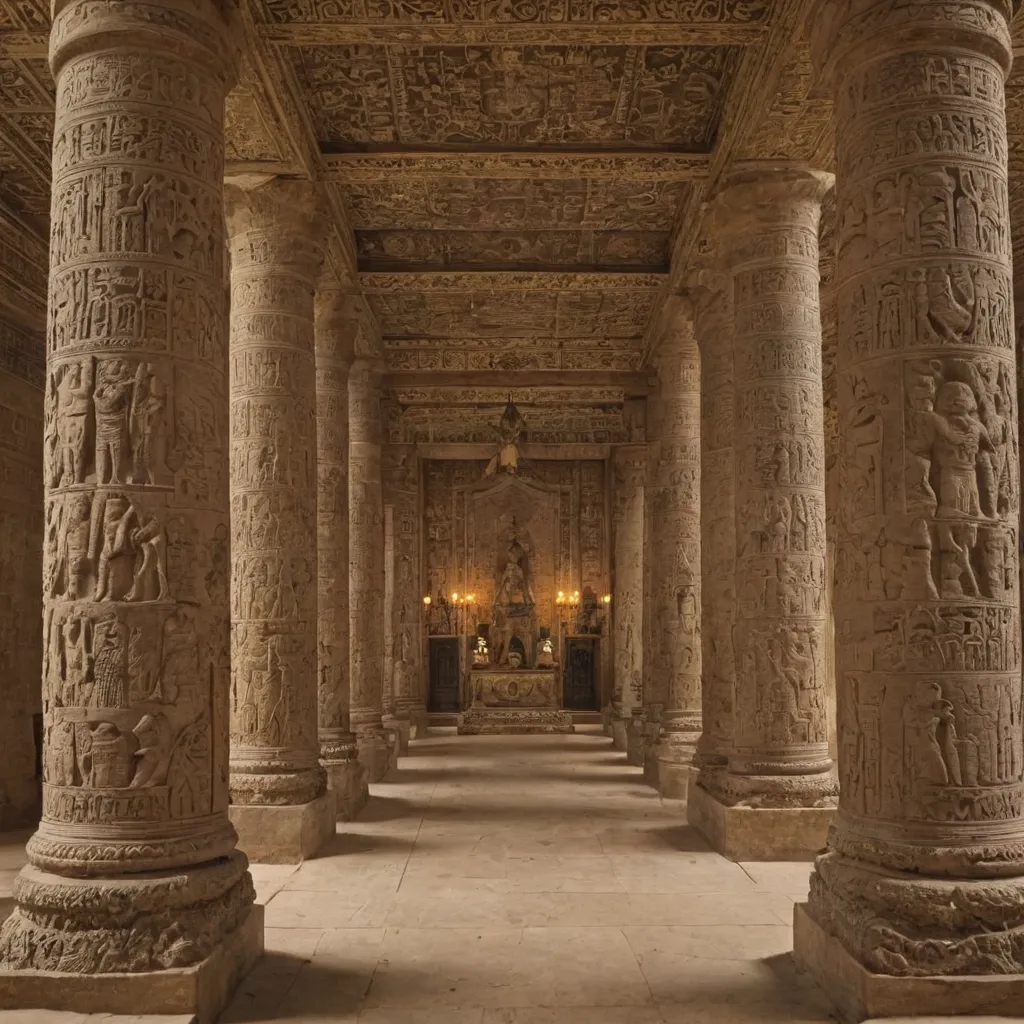
Anubis the Jackal God
Anubis the Jackal God is a central figure in ancient Egyptian mythology, venerated as the guardian of the dead and the divine embalmer. This enigmatic deity, with his distinctive jackal-headed form, played a crucial role in the journey of the deceased through the afterlife.
As the god responsible for the mummification process, Anubis ensured the proper preservation of the body, a crucial step in the Egyptian conception of the afterlife. The meticulous attention to detail and care provided by Anubis during this ritual was believed to be essential in preparing the deceased for their eternal journey.
Beyond his role as the divine embalmer, Anubis was also responsible for guiding the dead through the treacherous terrain of the underworld. He was believed to accompany the deceased to the Hall of Judgment, where their heart would be weighed against the feather of Ma'at, the goddess of truth and justice. This pivotal moment determined the fate of the individual, as those deemed worthy would be granted passage to the afterlife, while the unworthy faced the devouring of their heart by the monstrous Ammit.
Anubis' connection to the afterlife was further reinforced by his association with the jackal, a creature that was believed to inhabit the threshold between the world of the living and the dead. This symbolic link allowed Anubis to guide the deceased through the liminal spaces, ensuring their safe passage to the next realm.
In addition to his role as the guardian of the dead, Anubis was also revered as a deity of protection, often depicted as standing guard over the deceased's tomb or sarcophagus. This aspect of Anubis' persona was crucial in the ancient Egyptian belief system, as the preservation and protection of the physical body were essential for the successful transition to the afterlife.
The worship of Anubis was widespread throughout ancient Egypt, with temples and shrines dedicated to him found in various regions. These sacred spaces were not only sites of religious devotion but also centers of learning, where the complex rituals and beliefs surrounding the afterlife were studied and preserved.
The Weighing of the Heart
The Weighing of the Heart is a fundamental concept in ancient Egyptian mythology, closely associated with the figure of Anubis, the jackal-headed god who presided over the afterlife. This ritual served as a crucial step in the journey of the deceased, determining their fate in the afterlife based on the purity of their soul.
In this sacred ceremony, the heart of the deceased was weighed against the feather of Ma'at, the goddess of truth, justice, and cosmic order. The heart was believed to contain the individual's good deeds, knowledge, and moral character, while the feather represented the perfect balance and harmony of the universe.
The weighing was conducted in the Hall of Ma'at, where Anubis would oversee the process. Joining him were the deities Thoth, the god of wisdom and record-keeping, and the Forty-two Assessors, who represented the moral principles of Egyptian society. Together, they would scrutinize the deceased's heart, ensuring its purity and alignment with the principles of Ma'at.
If the heart was found to be lighter than the feather, it was considered pure, and the deceased would be granted access to the afterlife, known as the Field of Reeds, where they would live eternally in a state of bliss and harmony. However, if the heart was heavier, it was devoured by the monstrous creature Ammit, the "Devourer of the Dead," signifying the individual's moral failings and the ultimate denial of their afterlife.
The Weighing of the Heart was not merely a symbolic ritual but a deeply held belief in the ancient Egyptian worldview. It represented the idea that one's actions and character in life had direct consequences in the afterlife, encouraging the living to strive for virtue, wisdom, and a life in balance with the principles of Ma'at.
Anubis and the Mummification Process
The role of Anubis, the ancient Egyptian god of the dead, was integral to the mummification process that preserved the bodies of the deceased for the afterlife. As the god associated with the embalming and preparation of the dead, Anubis oversaw every step of this meticulous ritual, ensuring the successful transition of the soul to the afterlife.
The mummification process was a complex and multi-step procedure that could take up to 70 days to complete. Anubis, portrayed with the head of a jackal, was believed to have special knowledge of the techniques and methods required to preserve the body. His presence was crucial throughout the various stages of mummification:
- Evisceration: Anubis would make the incision in the body to remove the internal organs, which were then placed in canopic jars for preservation.
- Dehydration: The body would be packed with natron, a naturally occurring salt, to remove all moisture and prevent decomposition.
- Wrapping: Anubis would oversee the careful wrapping of the body in layers of linen, a process that could take several days to complete.
- Placement of Amulets: Anubis would ensure the placement of various amulets and talismans within the wrappings to protect the deceased and aid their journey to the afterlife.
The attention to detail and reverence for the mummification process was a reflection of the ancient Egyptians' profound belief in the afterlife. Anubis, as the god responsible for guiding the dead, played a crucial role in ensuring the deceased were properly prepared for their eternal existence.
Beyond the mummification itself, Anubis was also responsible for weighing the heart of the deceased against the feather of Ma'at, the goddess of truth and justice. This ritual, known as the "Weighing of the Heart," determined whether the individual was worthy of entering the afterlife. Anubis, with his keen understanding of the underworld, was the perfect deity to oversee this pivotal moment in the journey to the afterlife.
The Underworld Realms of Anubis
Anubis, the Egyptian god of the dead, presides over a complex and multifaceted underworld, a realm shrouded in mystery and intrigue. At the heart of this otherworldly domain lies the Hall of Judgement, where the deceased undergo a crucial process of weighing their soul against the feather of truth. This sacred ritual, the culmination of one's earthly existence, determines the fate of the individual in the afterlife.
Within the expansive underworld, Anubis oversees a myriad of realms, each with its own distinct purpose and significance. The Duat, the Egyptian term for the underworld, is a vast and intricate landscape, divided into various regions, each with its own guardians and inhabitants. The Field of Reeds, for instance, is a lush and verdant realm where the righteous and virtuous are granted eternal peace and sustenance, while the Benevolent Lake provides refreshment and rejuvenation for the deserving souls.
Yet, the underworld is not without its perils. The realm of Ammut, the devourer of souls, stands as a grim reminder of the consequences of a life lived in imbalance. Here, the heart of the deceased is weighed against the feather of truth, and those found wanting are condemned to have their souls consumed, their very existence erased from the cosmic tapestry.
Navigating the intricate pathways of the underworld is no easy feat, and Anubis, the god of the dead, is revered for his role as a psychopomp, guiding the souls of the deceased through the treacherous landscape. From the moment of death to the final judgment, Anubis is the steadfast companion, ensuring the safe passage of the soul to its rightful resting place.
The Cult of Anubis in Ancient Egypt
The Cult of Anubis in Ancient Egypt was a pivotal aspect of the Egyptian afterlife beliefs. Anubis, the jackal-headed god, held a central role in the funeral rites and the journey to the afterlife. As the god of embalming and the protector of the dead, Anubis was responsible for the preservation and safeguarding of the deceased, ensuring a smooth transition to the next life.
The cult of Anubis was deeply ingrained in the cultural and religious fabric of ancient Egypt. Temples and shrines dedicated to Anubis were found throughout the country, with the most significant being located in Abydos and Cynopolis (modern-day Kom el-Chugafa). These sacred sites were the epicenters of Anubis worship, where the faithful gathered to honor the god and seek his guidance in the afterlife.
During the embalming process, Anubis played a crucial role. The embalmers, known as the "servants of Anubis," would carefully mummify the deceased, following the rituals and rites prescribed by the cult. The placement of Anubis statues, amulets, and other funerary objects within the tombs was believed to provide protection and aid the deceased in their journey to the afterlife.
The importance of Anubis in the Egyptian afterlife beliefs is evident in the numerous funerary texts and artwork that depict the god. In the Book of the Dead, a collection of spells and incantations designed to guide the deceased through the afterlife, Anubis is prominently featured. He is often shown guiding the soul of the deceased, weighing their heart against the feather of truth, and ensuring the successful passage to the next life.
The cult of Anubis also had a significant impact on the societal and political landscape of ancient Egypt. The high priests of Anubis wielded considerable power and influence, as they were responsible for the sacred rituals and the interpretation of the afterlife. This influence extended to the ruling class, as the pharaohs often sought the guidance and blessings of the Anubis cult in their own funerary preparations.


